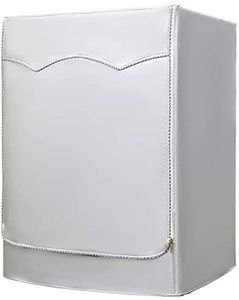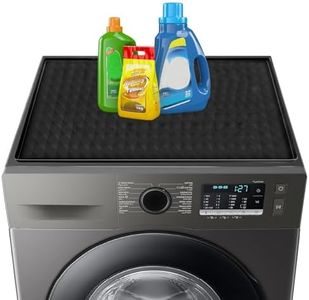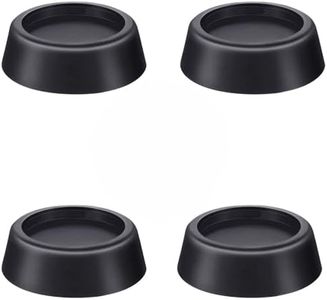We Use CookiesWe use cookies to enhance the security, performance,
functionality and for analytical and promotional activities. By continuing to browse this site you
are agreeing to our privacy policy
4 Best Washer Dryer Combos
From leading brands and best sellers available on the web.Buying Guide for the Best Washer Dryer Combos
Washer-dryer combos are great for people looking to save space and enjoy the convenience of washing and drying their laundry in a single appliance. When choosing a washer-dryer combo, it’s important to think about how much laundry you do, how much space you have, and the types of clothes you usually wash. Understanding the main specs will help you find a machine that fits your lifestyle and makes laundry day easier.CapacityCapacity refers to how much laundry the washer-dryer combination can handle in one load, commonly measured in kilograms. Larger capacities are great for families or those who do a lot of laundry, while smaller capacities work well for singles or couples with limited space. Keep in mind most washer-dryer combos have a smaller drying capacity than washing capacity, so check both numbers. To pick the right capacity, estimate your usual laundry load: if your baskets are always overflowing, a bigger drum will prevent you from doing multiple cycles.
Spin SpeedSpin speed tells you how quickly the drum spins during the spin cycle, measured in revolutions per minute (RPM). A higher spin speed can extract more water from clothes, reducing drying time. For delicate fabrics, however, lower speeds are gentler. If you frequently wash heavy-duty items like towels or jeans, a faster spin speed can be a time-saver, while those mainly washing delicate fabrics may prefer machines with adjustable speeds.
Energy EfficiencyEnergy efficiency shows how much electricity and water a washer-dryer combo uses. Efficient models save on utility bills and are kinder to the environment. These ratings usually come as special badges or letter-based scales. If you wash clothes frequently or want to minimize your environmental impact, a more energy-efficient machine is a smart choice. Compare ratings to choose one that matches your priorities for savings and sustainability.
Wash and Dry ProgramsWash and dry programs are the different settings that let you choose how your clothes are treated. These might include quick wash, delicates, wool, or allergen removal cycles. The wider the variety, the more flexible you’ll be in caring for different garment types. Consider which types of fabrics and clothes you wash most often—if you own many delicate items or activewear, specialized programs will be important. For general loads, a machine with basic but effective programs might be all you need.
Drying Type (Vented vs. Condenser)Washer-dryer combos typically use either vented or condenser drying methods. Vented machines expel hot air and moisture outside, while condenser types turn the moisture into water and store it in a tank. Condenser dryers are easier to install since they don’t need an external vent, making them better for apartments or internal rooms. If you have a spot with access to outside ventilation, a vented model might dry more quickly. Your choice will depend on your space and installation possibilities.
Noise LevelNoise level indicates how loud the machine operates and is measured in decibels (dB). Quieter machines are preferable in open living spaces or if the laundry area is close to bedrooms. If you’re sensitive to noise or often run cycles at night, look for models with low operating sound levels. For those who put their washer-dryer in a closed room, this might not be a top concern.
Size and Installation RequirementsThe size of a washer-dryer combo matters because these appliances need to fit in your available space and match your installation setup. Measure your laundry area carefully—think about doorways and available ventilation. Some machines are compact, designed for apartments, while others are full-size for bigger households. If your laundry nook is tight, prioritize a slim or stackable unit. Knowing your measurements ensures you won’t face surprises when the appliance is delivered.



